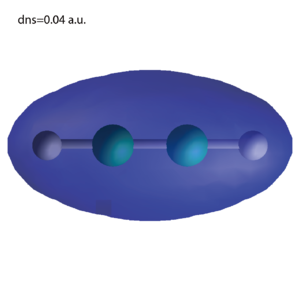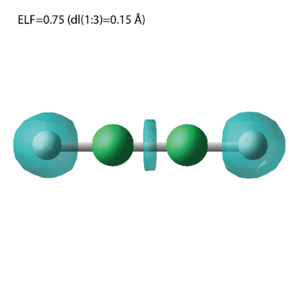Tutorial-v.1.0.0
Contents
Getting Started
Welcome to SALMON Tutorial!
In this tutorial, we explain the use of SALMON from the very beginning, taking a few samples that cover applications of SALMON in several directions. We assume that you are in the computational environment of UNIX/Linux OS. First you need to download and install SALMON in your computational environment. If you have not yet done it, do it following the instruction, download-v.1.0.0 and install and Run-v.1.0.0.
As described in Install and Run-v.1.0.0, you are required to prepare at least an input file and pseudopotential files to run SALMON. In the following, we present input files for several sample calculations and provide a brief explanation of the namelist variables that appear in the input files. You may modify the input files to execute for your own calculations. Pseudopotential files of elements that appear in the samples are also attached. We also present explanations of main output files.
We present 6 tutorials.
First 3 tutorials (Tutorial-1 ~ 3) are for an isolated molecule, acetylene C2H2. If you are interested in learning electron dynamics calculations in isolated systems, please look into these tutorials. In SALMON, we usually calculate the ground state solution first. This is illustrated in Tutorial-1. After finishing the ground state calculation, two tutorials of electron dynamics calculations are prepared. Tutorial-2 illustrates the calculation of linear optical responses in real time, obtaining polarizability and photoabsorption of the molecule. [[#Tutorial-3: Electron dynamics in C2H2 molecule under a pulsed electric field|Tutorial-3] illustrates the calculation of electron dynamics in the molecule under a pulsed electric field.
Next 2 tutorials (Tutorial-4 ~ 5) are for a crystalline solid, silicon. If you are interested in learning electron dynamics calculations in extended periodic systems, please look into these tutorials. Since ground state calculations of small unit-cell systems are not computationally expensive and a time evolution calculation is usually much more time-consuming than the ground state calculation, we recommend to run the ground and the time evolution calculations as a single job. The following two tutorials are organized in that way. Tutorial-4 illustrates the calculation of linear response properties of crystalline silicon to obtain the dielectric function. Tutorial-5 illustrates the calculation of electron dynamics in the crystalline silicon induced by a pulsed electric field.
The final tutorial (Tutorial-6) is for an irradiation and a propagation of a pulsed light in a bulk silicon, coupling Maxwell equations for the electromagnetic fields of the pulsed light and the electron dynamics in the unit cells. This calculation is quite time-consuming and is recommended to execute using massively parallel supercomputers. Tutorial-6 illustrates the calculation of a pulsed, linearly polarized light irradiating normally on a surface of a bulk silicon.
C2H2 (isolated molecules)
Tutorial-1: Ground state of C2H2 molecule
In this tutorial, we learn the calculation of the ground state solution of acetylene (C2H2) molecule, solving the static Kohn-Sham equation. To run the code, following files are used:
| file name | description |
| C2H2_gs.inp | input file that contain namelist variables and their values |
| C_rps.dat | pseodupotential file for Carbon |
| H_rps.dat | pseudopotential file for Hydrogen |
You may download the above 3 files from here.
In the input file C2H2_gs.inp, namelists variables are specified. Most of them are mandatory to execute the ground state calculation. You may find explanations of the namelist variables that appear in the input file in Explanations for C2H2_gs input files-v.1.0.0. It will help you to prepare an input file that you want to calculate. A complete list of the namelists that can be used in input files can be found at ???.
After the calculation, following output files are created in the directory that you run the code, C2H2.info, File:C2H2 info v1 0 0.zip) and additional output files (File:C2H2 gs output v1 0 0.zip
- input file (C2H2_gs.inp, File:C2H2 gs v1 0 0.zip)
- pseudo potential files (C_rps.data, H_rps.data, File:Pseudopotentials C2H2.zip)
- an output file (C2H2.info, File:C2H2 info v1 0 0.zip) and additional output files (File:C2H2 gs output v1 0 0.zip)
- images generated by cube files (psi: highest occupied molecular orbital (HOMO), dns: electron density, ELF: electron localization function)
Sample-2: Polarizability and photoabsorption of C2H2 molecule
- input file (C2H2_rt_response.inp, File:C2H2 rt response v1 0 0.zip)
- pseudo potential files (C_rps.data, H_rps.data, File:Pseudopotentials C2H2.zip)
- output files (C2H2-RT.data, C2H2-ALP.data, File:C2H2 response data v1 0 0.zip)
Sample-3: Electron dynamics of C2H2 molecule under a pulsed electric field
- input file (C2H2_rt_pulse.inp, File:C2H2 rt pulse v1 0 0.zip)
- pseudo potential files (C_rps.data, H_rps.data, File:Pseudopotentials C2H2.zip)
- output files (C2H2-RT.data, C2H2-ALP.data, File:C2H2 pulse data v1 0 0.zip)
Crystalline silicon (periodic solids)
Sample-4: Ground state and dielectric function of crystalline silicon
- input file (Si_sc_response.inp)
- pseudo potential files ( Si_rps.dat)
- output files
Sample-5: Ground state and electron dynamics in crystalline silicon under a pulsed electric field
- input file ( Si_sc_pulse.inp)
- pseudo potential files ( Si_rps.dat)
- output files ( Si_sc_pulse.out, Si_sc_pulse_j_ac.out
Light propagation in bulk silicon (Maxwell + TDDFT)
Sample-6: Coupled multiscale calculation of electrons and electromagnetic fields in crystalline silicon
- input file ( Si_ms_pulse.inp)
- pseudo potential files ( Si_rps.dat)
- output files(Si_ms_pulse.out, Si_ms_pulse_Ac_000000.out)


